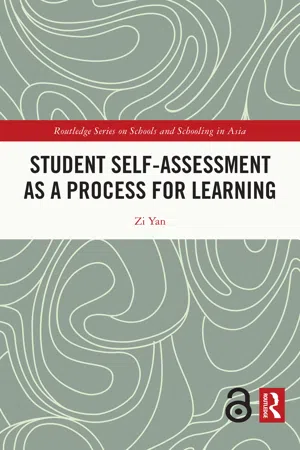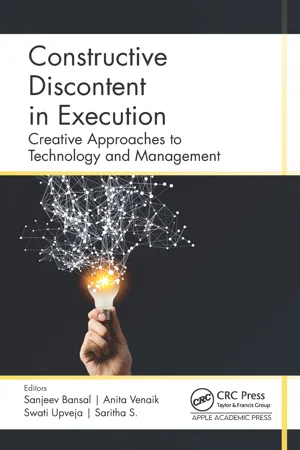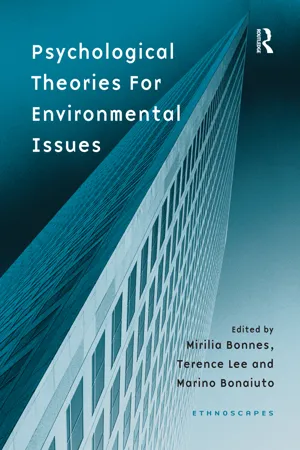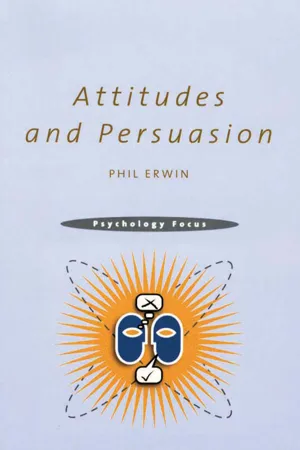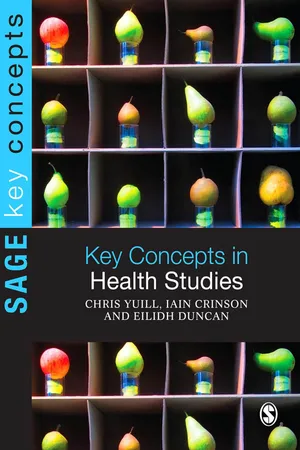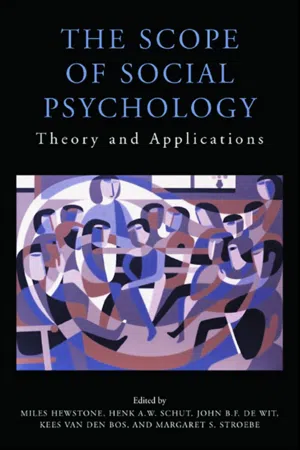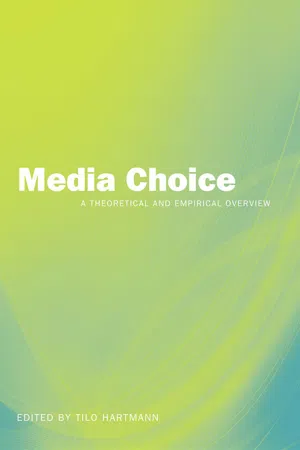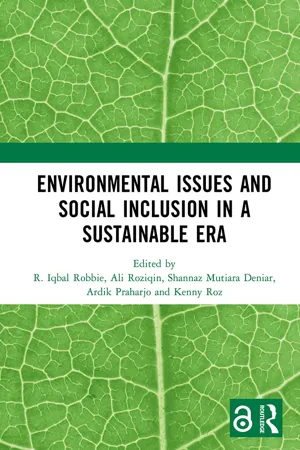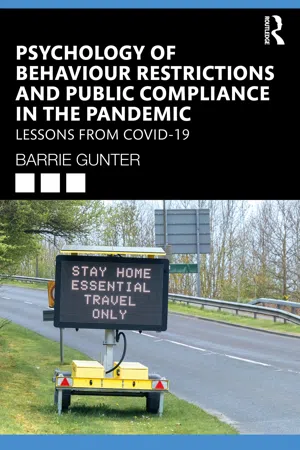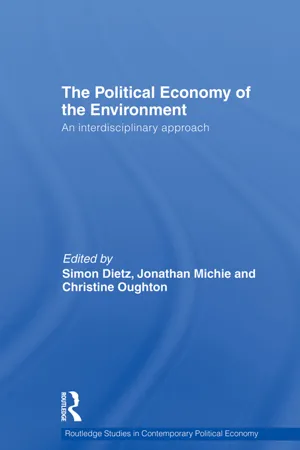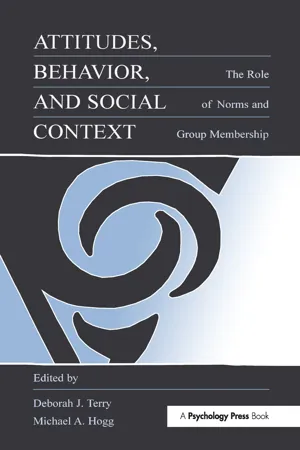Psychology
Theory of Planned Behaviour
The Theory of Planned Behaviour is a psychological model that predicts human behavior based on an individual's intentions. It suggests that behavioral intentions are influenced by attitudes, subjective norms, and perceived behavioral control. According to this theory, people are more likely to engage in a behavior if they have a positive attitude towards it, perceive social pressure to do it, and believe they have the ability to perform it.
Written by Perlego with AI-assistance
Related key terms
Related key terms
1 of 4
Related key terms
1 of 3
11 Key excerpts on "Theory of Planned Behaviour"
- Zi Yan(Author)
- 2022(Publication Date)
- Routledge(Publisher)
Ajzen, 1991 ) from the field of social psychology appears as an appropriate theoretical framework to investigate its predictors. TPB outlines relationships among five components: attitudes, subjective norms, perceived behavioural control, intentionality and behaviours around a phenomenon. An individual’s intention to enact a particular behaviour is determined by three inter-correlated factors: (1) attitudes (the cognitive evaluation and overall positive or negative evaluation toward a behaviour), (2) subjective norms (the social norms that influence an individual toward or away from a behaviour) and (3) perceived behavioural control (the extent to which the individual perceives his/her ability to control the implementation of a behaviour). In general, those with favourable attitudes, positive subjective norms and high levels of perceived behavioural control will be more likely to exhibit an intention to perform that behaviour. Once an intention is formed, it, along with the degree of perceived behavioural control, will directly influence the individual’s actual behaviour.TPB has been successfully applied to diverse behaviours in the Western culture (Armitage & Conner, 2001 ; Burrus & Moore, 2016 ; Hagger et al., 2015 ), as well as in the Eastern context (Mok & Lee, 2013 ; Yan & Cheng, 2015 ; Yan & Sin, 2014 , 2015 ). Nevertheless, the comprehensiveness of the TPB framework has been questioned because some researchers report that TPB provides a better explanation of intention than behaviour (Stanec, 2009 ; Yan & Cheng, 2015 ; Yan & Sin, 2014 ). Sometimes, there are discrepancies between intention and actual behaviour (Fife-Schaw et al., 2007 ). Ajzen (1991) admitted that the TPB framework remains open to the inclusion of additional factors that may contribute to a better explanation of particular intentions and behaviours. For example, Yan and Cheng (2015) reported that the TPB-based model explained teachers’ formative assessment intentions well, but not their practices. The additional elements included in the TPB framework to explain behaviour under investigation have varied in different studies, including desire (Perugini & Bagozzi, 2001 ) and moral norms and anticipated affect (Rivis et al., 2009- eBook - ePub
Constructive Discontent in Execution
Creative Approaches to Technology and Management
- Sanjeev Bansal, Anita Venaik, Swati Upveja, Saritha S., Sanjeev Bansal, Anita Venaik, Swati Upveja, Saritha S.(Authors)
- 2023(Publication Date)
- Apple Academic Press(Publisher)
Ajzen (1991 ). The PBC as a new component can equally impact intention, just as the attitudinal and normative elements. It is the addition of the third component—PBC—that transformed the TRA into what Ajzen described as TPB.Figure 13.1 Conceptual model (extended model of TPB).Source: Adapted from Ajzen, 1991 .Theory of planned behavior adopts that performing any particular action is a function of the individual’s views about the expected outcomes of the action, which Ajzen referred to as behavioral beliefs, beliefs about what others normatively expect, which he referred to as the normative beliefs, and person’s understandings about the existence of issues, which could ease or hamper the execution of the action, also called control beliefs. These factors collectively, create the intent toward the action (Ajzen, 2012).A person’s attitude concerning conduct reflects the level to which the person favors or disfavors the conduct. Subjective norm indicates the person’s opinion of societal expectation regarding the execution or non-execution of a given behavior, and perceived behavioral control indicates the party’s judgment of his/her capability and other issues, which could simplify or obstruct the action (Ajzen, 1991 ). In other words, the PBC reflects beliefs concerning the availability or non-availability of both internal and external resources required for the execution of a given activity.Scholars in behavioral sciences, especially in the field of social psychology and marketing, have recorded a huge success in adapting the TPB to understanding the intention to behave in certain ways, particularly in such practical situations as career choices (Kim and Hunter 1993). The TPB has become the most dominant and widespread model used in predicting people’s behavior, particularly the intent to involve in actions. It has been well validated in social psychology and increasingly endorsed as a robust research model for practically all planned and/or intentional behaviors in different context (Ajzen, 2001; Kolvereid, 1996 - eBook - ePub
- Mirilia Bonnes, Terence Lee, Terence Lee(Authors)
- 2017(Publication Date)
- Routledge(Publisher)
There is a second quality of the TRA, the premise of volitional control, that gradually became neglected by researchers. The great interest in application of the TRA, expressed by researchers working in a number of behavioral domains, caused the model to be applied for the study of behaviors that were not completely under volitional control of the population that was investigated. To expand the model to those kind of behaviors, for which control was a variable factor, the TRA was complemented by a component that was named perceived behavioral control. This concept represents the extent to which people feel they are able to perform the behavior, because they have adequate capabilities and/or opportunities or are lacking in these. It is very easy to see that this factor can substantially improve the generality of application of the model as there are very many behaviors that need specific skills or external facilities. Recycling, for example, is virtually impossible if no collection system is available, and abandoning the private car is often impractical, at the least, if no public transportation system is available.The successor of the TRA in which this factor was incorporated was named the Theory of Planned Behavior (Ajzen and Madden, 1986; Ajzen, 1991). The latest version of the Theory of Planned Behavior, as described by Ajzen in 1991, is depicted in Figure 6.1 . Similar to the TRA, the Theory of Planned Behavior is usually abbreviated as TPB. Like the attitude and the subjective norm concepts this third factor consists of a general concept, perceived behavioral control. Unlike attitude and subjective norm, perceived behavioral control is hypothesized to potentially be effective in three possible ways. Not only is perceived behavioral control expected to influence intentions, but also a direct relation with behavior is postulated (dashed line 1) and a third relation that describes the interaction of perceived behavioral control with intention (dashed line 2).The first relation is easiest to explain: people, when forming an intention will take into account if they can execute the behavior. It may be very attractive, and well received by other people, to run the 100 meters in 8 seconds flat, given the current world record, if you don’t feel capable of doing so, it is useless to aim at that record. Therefore, you will not form that intention. The second relation (dashed line 1) allows for the possibility that actual control is not equivalent to perceived control. If you feel capable of doing something, irrespective of your attitude and subjective norm, you may form the intention of doing so. However, in the execution of the behavior you may find out that there are unexpected barriers which prevent you from achieving what you intended to do. You may for example decide that you are going to ski downhill along a track that seems not too difficult. However, from the first meters it is apparent that you have underestimated the steepness of the slope. That may cause you to turn to another track (or far worse!). Thus, this relation is most likely to occur when perceived control deviates substantially from actual control. The third relation (dashed line 2) indicates that the relation of intention to behavior may depend on the degree of perceived behavioral control. When people intend to achieve something, they may only realize this when they feel they have adequate control. This relation is probably most likely for behaviors that entail the performance of complex behavior that needs to be mastered over a period of time, like playing a Beethoven sonata, that requires considerable piano playing skills. Bagozzi and Warshaw (1990) developed a variant of the TPB in which this process of trying to accomplish something plays a major role, which they called the Theory of Goal Pursuit. Another variant that has been developed for similar behaviors is the Theory of Trying (Bagozzi and Kimmel, 1995). - eBook - ePub
- Philip Erwin(Author)
- 2014(Publication Date)
- Psychology Press(Publisher)
Liska’s criticisms of the Theory of Reasoned Action are substantial, especially his attack on the central position of the behavioural intentions component. A study by Davis (1985) attempted to test Liska’s idea. Although Davis found empirical evidence that gave some support to Liska, he did not find that behavioural intention lost its position of central importance.Some theorists have attempted to produce a two-component model as an alternative to the unidimensional Theory of Reasoned Action, giving separate emphasis to the cognitive and evaluative components of attitudes (e.g. Bagozzi and Burnkrant, 1985), though research supporting such a re-conceptualisation has been severely criticised on methodological and statistical grounds (Dillon and Kumar, 1985).Further developments – the Theory of Planned BehaviourDespite the many criticisms over the years, the Theory of Reasoned Action is still going strong. However, it does have a more recent, more complex, incarnation – the Theory of Planned Behaviour. You may recall that in discussing Rogers’s (1975, 1983) Protection Motivation Theory an important revision to the early version of the theory was the inclusion of a ‘self-efficacy’ factor: the extent to which the person believed that they were able to effectively execute the necessary coping response. The Theory of Planned Behaviour represents a similar amendment to the original Theory of Reasoned Action. The Theory of Planned Behaviour (Ajzen, 1985) emphasises the role of perceived behavioural control as an influence on behavioural intentions and actual behaviour. A person’s confidence (or lack of it) in their ability to perform the required behaviour may be a crucial determinant of whether they choose to undertake the behaviour and are successful in its execution. The perceived behavioural control of a person who is uncertain of their ability to execute a behaviour may be influenced by their perception of their personal resources, such as their own abilities, their self-esteem and confidence, and the time and money that are required to be successful. For example, in sports we often hear of the gifted athlete who is constantly runner-up in competitions but never quite seems able to take the final hurdle and win outright. Perhaps at least part of the reason for this failure is that small doubt in their mind over their own behavioural control, over their ability to perform at the required level and triumph. Similar examples could be made in relation to people attempting to be successful on diets or perhaps in alcohol or drugs rehabilitation programmes. Studies comparing the Theory of Reasoned Action and the Theory of Planned Behaviour suggest that the extended Theory of Planned Behaviour may be a significantly better predictor of behavioural intentions and behaviour than is the Theory of Reasoned Action (Madden et al - eBook - ePub
- Chris Yuill, Iain Crinson, Eilidh Duncan(Authors)
- 2010(Publication Date)
- SAGE Publications Ltd(Publisher)
The model proposes that intention to engage in a behaviour is determined by an individual’s attitude towards the behaviour, their perception of the subjective norm, and their perceived behavioural control (PBC). It also proposes that these components are influenced by external variables (personality traits, demographic characteristics, and environmental influences). The ‘subjective norm’ is a person’s beliefs about what important people think they should do in relation to the behaviour. Important people in this context are figures from their social circle whose opinion or respect is valued. A person will be more likely to take up exercise, for example, if they feel that their partner wishes them to do so. An individual’s perceived ability to change a particular behaviour is incorporated into the perceived behavioural control element of the model. This perceived ability to control the behaviour is also sometimes referred to as self-efficacy. The TPB predicts that a person will have a greater intention to exercise if they have a positive attitude towards exercising, if they believe that important people want them to exercise, and if they feel they have the ability to take up exercising. Greater intention is proposed by the model to link to a greater likelihood of the person engaging in the behaviour.The TPB has received support from studies applying the model to a variety of health-related behaviours. A recent meta-analysis of 56 studies applying the TPB to a range of health behaviours reported that the model accounted for 41 per cent of the variance in individuals’ intentions and per cent of the variance in individuals’ future behaviour (Godin and Kok, 1996). Unlike the HBM, the TPB includes a role for environmental and social influences on behaviour through the subjective norm component. Although it includes some role for past behaviour within the perceived behavioural control component (i.e. those who have performed the behaviour successfully in the past will have a greater sense of control over the behaviour), some researchers have argued that a distinct ‘past behaviour’ component is missing from the model. - eBook - ePub
The Scope of Social Psychology
Theory and Applications (A Festschrift for Wolfgang Stroebe)
- Miles Hewstone, Henk Schut, Miles Hewstone, Henk Schut, John de Wit, Kees Van Den Bos, Margaret Stroebe(Authors)
- 2007(Publication Date)
- Psychology Press(Publisher)
This is revealed in the important role accorded to intentions and to beliefs as the fundamental determinants of intentions and behaviour. Behavioural, normative, and control beliefs represent the information people have about a behaviour, and it is ultimately on the basis of this information that they are said to make their decisions. This aspect of the Theory of Planned Behaviour and of its predecessor, the theory of reasoned action (Ajzen & Fishbein, 1980), has been a matter of debate almost since the theory’s inception (see, e.g., Bagozzi, 1981; Bentler & Speckart, 1979; Fredricks & Dossett, 1983); and it has continued to occupy investigators (e.g., Aarts, Verplanken, & van Knippenberg, 1998; Ouellette & Wood, 1998). A common element of these critiques has to do with the role of prior behaviour as an antecedent of later behaviour. Specifically, the assumption is usually made that repeated performance of a behaviour results in the establishment of a habit ; and that behaviour at a later time occurs at least in part habitually, without the mediation of beliefs, attitudes, or intentions. Once a habit has been established, initiation of the behaviour is said to come under the direct control of external or internal stimulus cues. In the presence of these discriminative stimuli, the behaviour is assumed to be automatically activated (see Bargh & Chartrand, 1999; Bargh, Gollwitzer, Lee-Chai, Barndollar, & Troetschel, 2001; Ouellette & Wood, 1998). Bentler and Speckart (1979) submitted aspects of this analysis to an empirical test. Using structural equation techniques, they showed that a model with a direct path from prior behaviour to later behaviour provided a significantly better fit to the data than did the theory of reasoned action in which the effects of prior behaviour are mediated by attitudes, subjective norms, and intentions - eBook - ePub
Media Choice
A Theoretical and Empirical Overview
- Tilo Hartmann(Author)
- 2009(Publication Date)
- Routledge(Publisher)
“expectancy-value estimations,” Eccles & Wigfield, 2002, p. 118; Marewski et al., this volume; Wolling, this volume; methodologically addressed as “indirect measures”). People’s attitude Figure 3.1 The theories of reasoned action and planned behavior (Ajzen & Fishbein, 2005, p. 194). towards a behavior is a function of how likely they deem different outcomes associated with the behavior, and how desirable they find these outcomes (behavioral beliefs): people develop a favorable attitude towards the behavior if they perceive the outcomes to be both highly likely and desirable. People’s subjective norms build on their beliefs about the normative expectations of relevant others and the motivation to comply with these expectations (normative beliefs). Subjective norms have a positive influence on behavior if people think that relevant others (friends, parents, classmates, etc.) appreciate the behavior or even pursue it themselves, and if people are at the same time willing to comply to their social surrounding. It is commonly the case that behavior not only depends on people’s will, but also on favorable external circumstances. The last of the three determinants outlined above, perceived behavioral control, therefore builds on the factors that people think may facilitate or impede the behavior, as well as the presumed power of these factors (control beliefs). Following TOPB, behavioral control is high if people consider it possible for them to carry out the behavior (cf. “self-efficacy,” Bandura, 1997); that is, behavioral control is high if people think the expected circumstances will ease the behavior and/ or if people believe they are capable of overcoming circumstances that they expect to impede the behavior. A person may believe, for example, that playing a multiplayer video game ultimately depends on the circumstance that another player is available - eBook - ePub
Environmental Issues and Social Inclusion in a Sustainable Era
Proceedings of the 2nd International Conference on Humanities and Social Sciences (ICHSOS 2022), Malang, Indonesia, 1-2 July 2022
- R. Iqbal Robbie, Ali Roziqin, Shannaz Mutiara Deniar, Ardik Praharjo, Kenny Roz, R. Iqbal Robbie, Ali Roziqin, Shannaz Mutiara Deniar, Ardik Praharjo, Kenny Roz(Authors)
- 2023(Publication Date)
- Routledge(Publisher)
et al. (2016), a person's behavior, including ecological behavior, is determined by his intention to behave ecologically, attitudes, subjective norms, and perceptions of behavioral control.Various studies are relevant to the issue of environmental pollution. For example, research by Kaiser and Fuhrer in Sujana (2018) concerns the relationship between ecological attitude and ecological behavior in the associations of transportation users in Switzerland. It is explained that 40% of behavior predicts habit formation, and 75% of behavioral control predicts habit formation. In addition, other factors cause environmental behavior, namely behavioral control. Nilasari et al. (2013) examined the variables of attitude, ecological concern, and purchase intention of green products using a quantitative approach and playing path analysis. The results of this study indicate that attitudes significantly positively mediate the effect of environmental concern on the purchase intention of green cosmetics or products. Meanwhile,Hendarsyah et al. (2020)examined the impact of socialization, awareness, and attitude variables on green consumer behavior in plastic waste management. The Structural Equation Model (SEM) found that attitudes influence green consumer behavior significantly.Safitri et al. (2019) examined the effect of education level, knowledge, and attitude on waste management behavior, with a quantitative approach using observational analytic methods and cross-sectional design. It was found that the level of education, knowledge, and attitudes was positively and significantly related to waste management behavior. In comparison, Amalia (2019) tested the influence of attitudes, subjective norms, and perceived control on behavior. The results of this study indicate that attitudes, subjective norms, and perceptions of behavioral control are positively significant in the tendency of green behavior. In addition, Utami (2020) - eBook - ePub
Psychology of Behaviour Restrictions and Public Compliance in the Pandemic
Lessons from COVID-19
- Barrie Gunter(Author)
- 2022(Publication Date)
- Routledge(Publisher)
Perceived behavioural control was measured as follows. “To reduce the spread of the coronavirus, how DIFFICULT is it for you to follow these recommendations?” Response options were extremely easy, somewhat easy, neither easy nor difficult, somewhat difficult and extremely difficult. Perceived subjective norm asked respondents: “To reduce the spread of the coronavirus, how many OTHER PEOPLE do you think are following these recommendations?” Response options were: no one, few people, some people, most people, everyone. Attitude towards each preventive behaviour was measured by asking respondents: “To reduce the spread of the coronavirus, how EFFECTIVE do you believe these recommendations are?” Responses ranged on a five-point scale from extremely effective to extremely ineffective.Each of the Theory of Planned Behaviour variables was found to have independent associations with each preventive behaviour. Perceived behavioural control emerged across most preventive behaviours as the variable most strongly linked to preventive behaviour intentions, especially for older adults. There were some variances in findings. Subjective norm was not associated significantly with intention to comply with “coughing into your elbow”. Attitude towards the behaviour was more strongly related to social distancing intention than was perceived behaviour control or subjective norm.Theory of Planned Behaviour and Behaviour Change among Health Professionals
Research within the Theory of Planned Behaviour framework was conducted with one group of clinical professionals – dentists – to find out whether it could provide insights into ways of motivating COVID-compliance with professional practice. This investigation was conducted with 324 dental health-care workers in Saudi Arabia. Respondents’ intentions to comply with relevant COVID-19 restrictions designed to control spread of infections were underpinned to some degree by having positive attitudes about whether this would be a good thing to do (Shubayr et al., 2020 ).A number of dentists, dental hygienists and their assistants were surveyed online about the infection protection practices used in their profession. Respondents’ knowledge of these practices was tested together with their beliefs in their efficacy. For example: “Practicing COVID-19 IPC will protect the staff in the dental clinic”. Attitudes towards these practices were measured with questions that invited respondents to react positively or negatively towards their use. A list of statements concerning the protection of staff and others in their dental clinic was rated in terms of their importance. - eBook - ePub
- Simon Dietz, Jonathan Michie, Christine Oughton(Authors)
- 2011(Publication Date)
- Routledge(Publisher)
In rational-man theory, people are expected to rationally make the ‘best’ choices given their preferences, independent of how these choices are presented. Therefore more information and choice are always considered good. Using this theory, policy makers should ensure that people always have as much information and as many things to choose between as possible, and the process of introducing policy is irrelevant. However, ideas from behavioural economics indicate this is not the right approach.We know from experimental economics (see examples below) that more choice and more information can be overwhelming and lead to a feeling of helplessness or reduced self-efficacy. Bandura (1977b), a psychologist, published a theory on how self-efficacy or ‘people’s judgments of their capabilities to organize and execute courses of action required to attain designated types of performances’ affects our behaviour. He argues it affects the choices we make, how much effort we put into what we do, how long we persist in a task before giving up and how we feel. Psychologists Ajzen and Madden (1986) have developed a model using this idea called the Theory of Planned Behaviour. This is basically similar to the Theory of Reasoned Action (Fishbein and Ajzen 1975) but it includes a parameter of ‘perceived behavioural control’ which is a measure of self-efficacy. This model has greater predictive capabilities than the Theory of Reasoned Action.Kaplan (2000), a psychologist, has proposed a participatory approach to problem-solving. He suggests that telling people what to do is demotivating (reducing self-efficacy), is likely to encounter resistance and ignores the possibility that the local knowledge people have may yield better solutions to a problem. Instead, providing people with ‘opportunities for understanding, exploration and participation’ engages ‘powerful motivations’ for ‘competence, being needed, making a difference, and forging a better life’. In summary, people’s self-efficacy increases and they are motivated towards implementing the solutions – i.e. changing their behaviour in a desired way. - eBook - ePub
Attitudes, Behavior, and Social Context
The Role of Norms and Group Membership
- Deborah J. Terry, Michael A. Hogg(Authors)
- 1999(Publication Date)
- Psychology Press(Publisher)
4 A Theory of Attitudes, Subjective Norms, and Private Versus Collective Self-ConceptsDavid Trafimow New Mexico State UniversityOne of the most important tasks for personality and social psychologists is to predict behavior. Consequently, several theories have been proposed for this purpose. One theory that has performed well over the last few decades is Fishbein’s theory of reasoned action (TRA; Ajzen & Fishbein, 1980; Fishbein, 1967b; 1980; Fishbein & Ajzen, 1975). According to this theory, the proximal cause of behavior is intention to behave, which, in turn, is caused by attitude and subjective norm. An attitude is the target person’s opinion about whether the behavior is positive or negative, and a subjective norm is the target person’s opinion about what most others who are important to him or her think he or she should do. Attitudes and subjective norms are determined by beliefs about the consequences of the behavior and beliefs about the opinions of specific important others, respectively.Not surprisingly, recent investigators have added other variables to the model. Some of these are affect (Triandis, 1980), perceived behavioral control (Ajzen, 1988), moral values (Gorsuch & Ortberg, 1983), previous behavior (Bentler & Speckart, 1981; Fredricks & Dossett, 1983), behavioral norms (Grube, Morgan, & McGree, 1986), and habit (Triandis, 1980). Although each of these variables has been shown to increase our understanding of some behaviors, attitudes and subjective norms have remained central components of the theories, and much of my own research has been concerned with them. This chapter summarizes that work by placing it in a context of some propositions that specify the relations between attitudes, subjective norms, and private and collective self-concepts (see Table 4.1 ).The propositions are presented in an order that, like the TRA (Fishbein, 1980), traces behavior back to other variables. The first proposition takes into account recent research suggesting that behavioral intentions are not the only proximal determinant of behavior. The second proposition addresses whether attitudes and subjective norms, the presumed determinants of intentional behavior, are really separable from each other. The third proposition suggests that the distinction between attitudes and subjective norms can be applied to people as well as behaviors. Furthermore, five subpropositions suggest variables that influence the extent to which people or behaviors are controlled by attitudes and subjective norms. These include the private self, the collective self, and culture. Finally, the fourth and fifth propositions propose distinctions between different types of beliefs that
Index pages curate the most relevant extracts from our library of academic textbooks. They’ve been created using an in-house natural language model (NLM), each adding context and meaning to key research topics.
Explore more topic indexes
Explore more topic indexes
1 of 6
Explore more topic indexes
1 of 4
